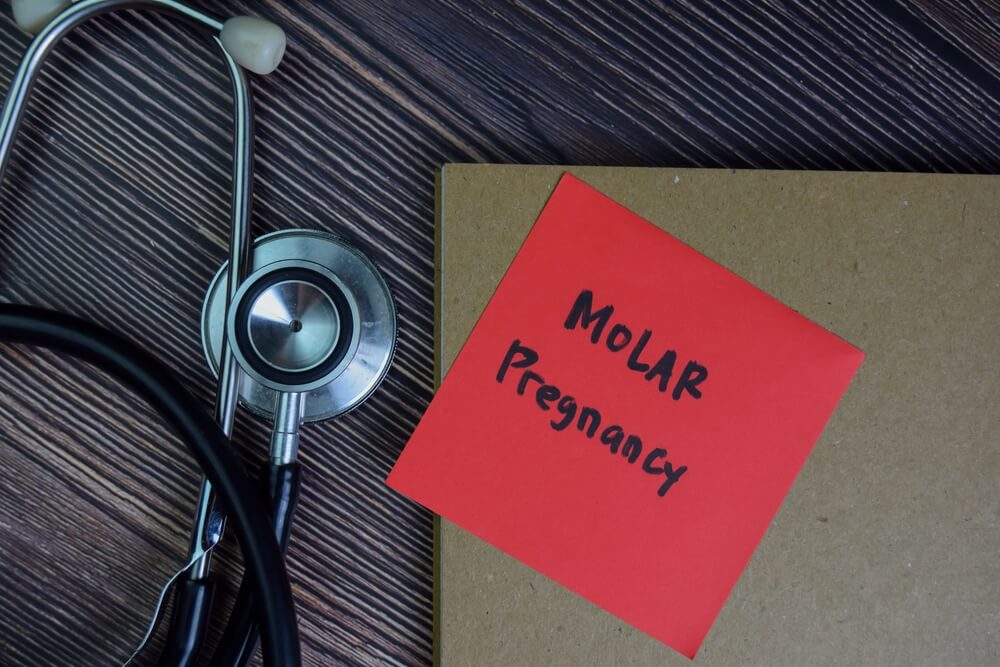A molar pregnancy, also referred to as hydatidiform mole, is a genetic-related pregnancy complication that occurs during the sperm fertilization of the egg. With the right and early treatment, most women can give birth to healthy babies later on. In general, only one in around 1,000 pregnancies turns out to be a molar pregnancy. The hydatidiform mole is more common among European heritage women in the US than in other ethnicities. The issue is discovered through molar pregnancy ultrasound. In order to have a safe and healthy pregnancy and childbirth, obstetrics in Weston and Pembroke Pines professional services are at your disposal.
What Is a Molar Pregnancy?
As mentioned, molar pregnancy or hydatidiform mole is a genetic problem that’s caused by the abnormality in the trophoblast growth, which is supposed to be the placenta cells.
When we discuss what a molar pregnancy is, we can differentiate two different types, namely complete and partial molar pregnancy. Complete molar pregnancy means that the tissue of the placenta is swollen and cystic without actual fetal formation. In the case of partial molar pregnancy, it’s possible to have both normal and abnormal placental tissue. Also, even though there may be fetal formation, it’s not possible for the fetus to survive, which leads to early miscarriage.
Since this complication can lead to other severe health issues, even cancer, molar pregnancy ultrasound is performed early on to check for the abnormalities and provide immediate treatment if necessary.
Common Symptoms of Molar Pregnancy

Even if you know what a molar pregnancy is, at first glance, it may look like any other pregnancy, but it typically causes some very distinct symptoms and issues, such as:
- First trimester vaginal bleeding
- Vomiting and nausea
- Vaginal cyst discharge
- Pain and pressure in the pelvic area
- No fetal movement or heartbeat
You should see a doctor if you encounter any symptoms associated with this particular condition. You can always reach out to Dr. Kompal Gadh for all questions and concerns you may have. Other indicators of a molar pregnancy that the doctor may pick up on include:
- The uterus grows too quickly for the current pregnancy phase
- Blood pressure that’s unusually high and/or high protein levels in urine (preeclampsia)
- Hyperthyroidism
- Anemia
- Ovarian cysts
Women above the age of 35 or under the age of 20 have a higher risk of having a molar pregnancy. It’s more likely that you’ll have another molar pregnancy if you’ve already had one. On average, one woman in every 100 will experience a molar pregnancy for the second time. Having two or more miscarriages in the past can also put you at higher risk of this pregnancy complication.
What Causes Molar Pregnancy?
Molar pregnancy is the result of an improperly fertilized egg. Typically, a human cell will have 23 separate sets of chromosomes. In every pair of chromosomes, one is inherited from each parent.
A complete molar pregnancy occurs when one to two sperm fertilize an unfertilized egg, resulting in offspring that is genetically identical to the father. Here, maternal chromosomes are eliminated or rendered inactive, while those from the father are replicated.
In the case of partial molar pregnancy, both sets of chromosomes come from the father but the mother’s chromosomes are not completely lost. This causes the embryo to develop with 69 chromosomes rather than the usual 46. The most common cause of this is the fertilization of an egg by two sperm, which results in a third version of the paternal genome.
Potential Complications of Molar Pregnancy
The removal of molar pregnancy may not always result in completely eliminating molar tissue. There is a name for this condition – persistent gestational trophoblastic neoplasia, or GTN for short. 15–20% of complete molar pregnancies and up to 5% of partial molar pregnancies get affected by this.
An elevated level of the pregnancy hormone HCG after the abnormality has been surgically removed is a possible indicator of persisting GTN. Problematic hydatidiform moles can reach the main uterine wall layers and subsequently cause bleeding.
Chemotherapy is the go-to treatment for persistent GTN. Complete uterus removal is another therapy option (hysterectomy).
Although highly uncommon, choriocarcinoma, a malignant type of GTN, can arise and spread to other parts of the body on occasion. Multiple anti-cancer medications are typically effective against choriocarcinoma. This problem occurs more frequently in a complete molar pregnancy than in a partial one.
Some other complications associated with this condition could be:
- Blood infection, known as sepsis
- Uterine infection
- Shock, or relatively low blood pressure
- Preeclampsia, or rather high blood pressure
Treatment of Molar Pregnancy

This condition is identified through a molar pregnancy ultrasound performed by your doctor. To create images of your uterus, an ultrasound uses sound waves. If your doctor thinks it’s necessary, they may also suggest blood tests to measure your HCG levels.
The vast majority of molar pregnancies end naturally. Grape-shaped cysts are common in these situations and usually exit the uterus and are expelled through the vagina.
Molar pregnancies require specific removal treatment in some women. During treatment, the uterus is dilated, and the aberrant tissue is removed using a curettage and suction technique.
When all other treatments fail, a hysterectomy (the complete surgical removal of the uterus) may be the only option for women experiencing a molar pregnancy.
Possible Prevention Measures
Consult your doctor if you’ve had a molar pregnancy before trying to conceive again. Waiting anywhere from half a year to a whole year may be suggested before attempting to conceive. The risk of a second molar pregnancy is relatively low, although it is higher than in women who have never had a molar pregnancy.
When you get pregnant again, your doctor may recommend preliminary ultrasounds to check on your progress and reassure you that everything is developing correctly. The possibility of prenatal genetic testing for the purpose of identifying a molar pregnancy is also something your doctor may bring up.
With therapy, molar pregnancies typically end without further difficulties for the mother. After a molar pregnancy, women can usually carry a healthy pregnancy. There is no increased risk of miscarriage associated with this condition.
Vaginal bleeding, severe morning sickness, or the expulsion of grape-sized cysts during pregnancy are all reasons to seek medical attention at once. The development of further problems can be avoided with prompt diagnosis and treatment.
The loss of a pregnancy can be a painful experience. Be kind to yourself and allow yourself some time to mourn. Feel free to express your emotions and truly feel them. If you need comfort, talk to your loved ones. See a counselor or your prenatal care provider if you’re having problems coping with your feelings. That said, you can always count on us at Advanced OBGYN Institute. We provide top-notch gynecological care and services for women at all their life stages, from adolescence to menopause. This also includes prenatal, pregnancy, and postnatal care.






